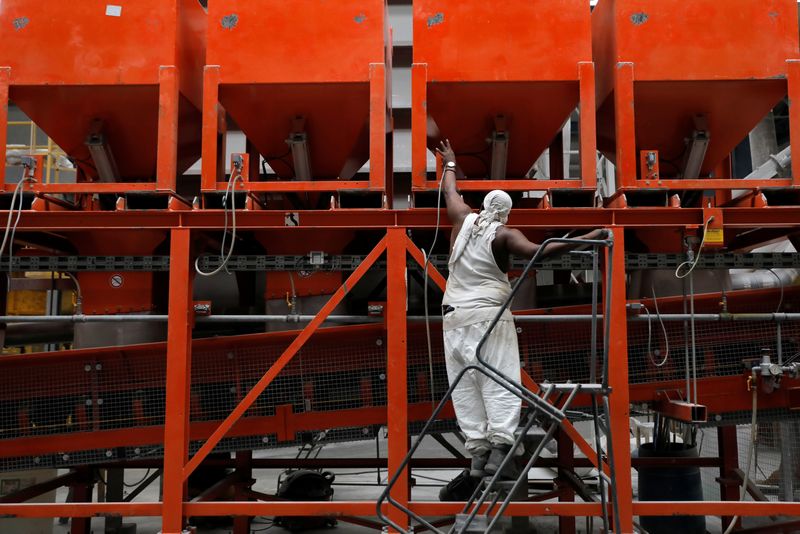By Dan Burns
(Reuters) -U.S. manufacturing activity slowed for a second straight month in May as new goods orders dropped by the most in nearly two years, and spending on construction projects slipped unexpectedly the month before, the latest indications that a gradual slowdown in the economy is taking hold.
The Institute for Supply Management's manufacturing purchasing managers index for May fell to 48.7 from 49.2 in April, the research group said on Monday, noting an increase in references to "softening" among survey respondents. It was both the second straight decline and the second month below the 50 level that separates growth from contraction. Economists polled by Reuters had a median estimate for 49.6.
Meanwhile, construction spending fell unexpectedly for a second month in April on declines in non-residential activity, although there was an improvement in single-family home building.
Together, the two reports pointed to continued sluggishness in the economy as the second quarter began. Gross domestic product grew at just 1.3% in the first quarter, and until recently had been expected to reaccelerate in the current period. The Atlanta Fed's GDP Now model, which had tracked at well above a 2% growth rate through May, was revised down to just 1.8% following the ISM and construction spending releases.
With interest rates remaining high thanks to the Federal Reserve's focus on elevated inflation, spending on manufactured products and capital projects has been sluggish. Data last week showed consumer spending on goods fell in April as households showed signs of husbanding their dwindling savings.
Details of the ISM survey and comments from respondents "suggest that higher-than-expected rates this year have reduced business investment and have made businesses more reticent to increase their levels of inventory," Matthew Martin, U.S. economist at Oxford Economics, said in a research note. "This has led to softer than anticipated demand, with new orders declining and the backlog of orders in contraction."
SEPTEMBER RATE CUT
The softer tone of the recent data has begun to buttress the case in investors' minds for the Fed to start lowering interest rates about three months from now. Following the ISM data, interest rate futures pointed to about a 60% probability that the Fed will lower its benchmark rate in September from the current 5.25-to-5.50% range it has been held at since last July.
Fed officials, who next meet on June 11-12, have said their primary focus is on returning inflation to their 2% target after price pressures reaccelerated in the first quarter.
While the ISM data showed factory input cost increases slowed from their highest in nearly two years, they remain above levels seen over most of that time as commodity prices continue to dog goods producers.
"With freight costs also moving higher at the start of the peak shipping season, risks are rising that higher production costs could be passed through to consumer prices and complicate the Federal Reserve's objective to returning inflation to 2% and potentially delay the timing of the first rate cut," Martin said.
The factory sector has been under pressure for well over a year, with ISM's headline measure of activity in contraction now for 18 of the past 19 months thanks largely to steep borrowing costs.
ISM's measure of new orders for manufacturers plunged by the most since June 2022, dropping 3.7 points to a reading of 45.4, a one-year low.
Meanwhile, factory employment - also in the doldrums for the better part of two years - grew for the first time since last September. Data due from the Labor Department this Friday is expected to show 5,000 manufacturing jobs were created last month amid overall employment growth of about 185,000.
Separate data on Monday from the Commerce Department's Census Bureau showed construction spending fell 0.1% after slipping 0.2% in March. Economists polled by Reuters had forecast construction spending would gain 0.2%. Construction spending increased 10% on a year-on-year basis in April.
Spending on private construction projects fell 0.1% in April, led by declines in commercial projects. Public project spending fell 0.2%, with the two largest categories - educational and highway construction - both showing declines.

The report had some bright spots, however.
Single-family residential construction edged up 0.1% to the highest since August 2022, supported by low levels of existing homes for sale even as high mortgage rates weigh on home sales overall. Also, spending on factory construction climbed 0.9% to a record high, fueled by investments under the Biden administration aimed fostering domestic production of computer chips and green energy goods.